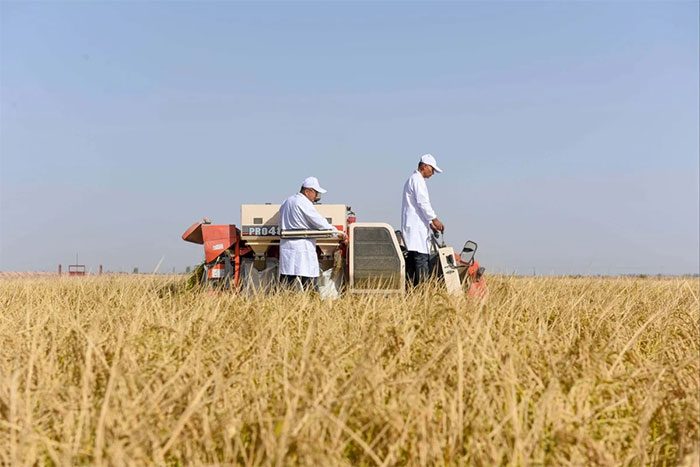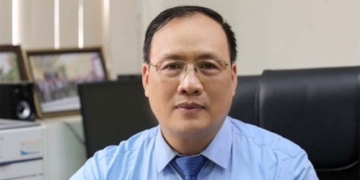Chinese scientists have halved the growth cycle of a common rice variety cultivated in a greenhouse in the Xinjiang desert.
State broadcaster CCTV reported that this experiment marks the first success of new techniques in a controlled climate environment in the desert, paving the way for rapid agricultural development in arid regions year-round.

China has less arable land compared to its population ratio. (Illustrative photo: Xinhua).
This achievement is part of China’s efforts to enhance food self-sufficiency, a national priority as climate change increasingly impacts agriculture and global trade fluctuates rapidly. The need for cultivating in barren or abandoned areas is becoming more pressing, as China has less arable land compared to its population ratio.
According to researchers at the Chinese Academy of Agricultural Sciences, this experiment was conducted using soilless cultivation methods with controlled temperatures and artificial lighting. The results revealed that the traditional rice variety was ready for harvest in just 60 days. The trial took place in Hotan, a county located in the southwestern part of the Xinjiang Uyghur Autonomous Region.
In contrast, conventional cultivation methods would require 120 to 150 days in major rice-growing areas in the south or northeast.
This rate of rice growth had been recorded in experimental facilities as early as 2021, but the success of the trial in Xinjiang offers broader applicability due to lower construction and equipment costs in the region, which also benefits from longer daylight hours and a more pronounced temperature difference between day and night.
Yang Qichang, the project leader and chief scientist of the Urban Agriculture Department at the Chinese Academy of Agricultural Sciences, stated that the facilities in Hotan cost 350 yuan (approximately 48 USD) per square meter, only a third of the cost of greenhouses in the Netherlands.
He also noted that the experiment in Hotan consumed only a quarter of the energy that a standard greenhouse in the Netherlands would require.
“Once integrated in the future with new energy sources, mechanization, and smart technology, construction and operational costs will decrease significantly. These greenhouses will be highly competitive,” he said.
New farming methods are being tested more frequently in the Xinjiang region as Beijing seeks to expand food production in more areas.
In October 2023, researchers announced a large test field on the edge of the Taklimakan Desert growing salt-tolerant rice varieties that yield significantly higher than similar salt-tolerant rice grown elsewhere.
Just two months prior, media outlets reported a technological breakthrough in aquaculture in the region, with freshwater fish, prawns, abalone, and lobsters being farmed in local waters.
In Xinjiang, cotton typically dominates agricultural production, making rice cultivation rare due to water scarcity. The region primarily grows staple crops such as wheat and corn.


















































